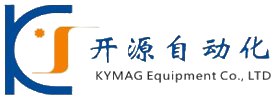Differences And Characteristics Between Permanent Magnet Motors And Traditional Motors
2024-09-30
With the continuous advancement of technology and rapid development in the industrial field in the new era, the technological innovation of electric motors, as the core component of power conversion, is increasingly receiving attention. Among various types of motors, permanent magnet motors and traditional motors are two common choices. We will explore the differences and characteristics between permanent magnet motors and traditional motors in terms of structure, performance, and application fields, in order to better understand these two motor technologies.
1、 Structural differences
Electromagnets are usually used as excitation sources, which require external power supply to generate a magnetic field. Permanent magnet motors use permanent magnets instead of electromagnets, which are usually made of rare earth materials and have high magnetic energy product and stability. This structural difference allows permanent magnet motors to operate without the need for additional power supply to the excitation system, simplifying the motor structure and reducing energy consumption.
Permanent magnet motor
2、 Performance characteristics
1. Efficiency: Permanent magnet motors usually have high efficiency due to the elimination of excitation losses. At the same power, the operating efficiency of permanent magnet motors is often higher than that of traditional motors, which gives them significant advantages in energy conservation and emission reduction.
2. Speed regulation performance: Traditional motors adjust their speed by changing the power frequency or voltage, with a wide range of speed regulation. However, permanent magnet motors have relatively weak speed regulation performance due to their fixed magnetic field, but they have high speed accuracy during stable operation.
3. Starting performance: Permanent magnet motors have high starting torque and can provide significant torque at low or even zero speeds, making them advantageous in applications that require large starting torque.
4. Reliability: Permanent magnet motors usually have high reliability due to their simple structure and fewer components. Rare earth permanent magnet materials have a long service life and low maintenance costs.
3、 Application Fields
1. Application fields of traditional motors: Traditional motors are widely used in various fields such as industry, agriculture, transportation, etc., especially in applications that require speed regulation and frequent start stop, such as fans, water pumps, compressors, etc.
Permanent magnet fan
Permanent magnet water pump
2. Application fields of permanent magnet motors: Permanent magnet motors are widely used in new energy vehicles, wind power generation, electric bicycles and other fields due to their high efficiency and energy-saving characteristics. In addition, in situations where high-precision speed control is required, such as precision machine tools, medical equipment, etc., permanent magnet motors also play an important role.
4、 Development Trends
With the increasing global attention to energy conservation and emission reduction, permanent magnet motors have gradually increased their share in the motor market due to their high efficiency and energy-saving advantages. Meanwhile, with the continuous advancement of research and application technology of rare earth permanent magnet materials, the performance of permanent magnet motors will be further improved, and their application fields will become more extensive. Although traditional motors still have advantages in some specific situations, they face pressure from technological upgrades and efficiency improvements.
Conclusion
There are significant differences and characteristics between permanent magnet motors and traditional motors in terms of structure, performance, and application fields. Permanent magnet motors have been widely used in fields such as new energy and precision control due to their advantages of high efficiency, energy saving, and high reliability, and have shown promising development prospects. Traditional motors, on the other hand, require continuous efforts in technological upgrades and efficiency improvements to meet increasingly stringent energy and environmental requirements. In the future development of motor technology, permanent magnet motors and traditional motors will each play their respective advantages and jointly promote technological progress and sustainable development in the industrial field.
Previous:
Recommended News







